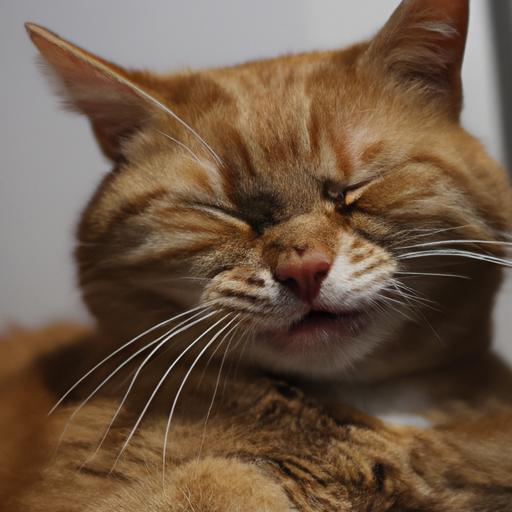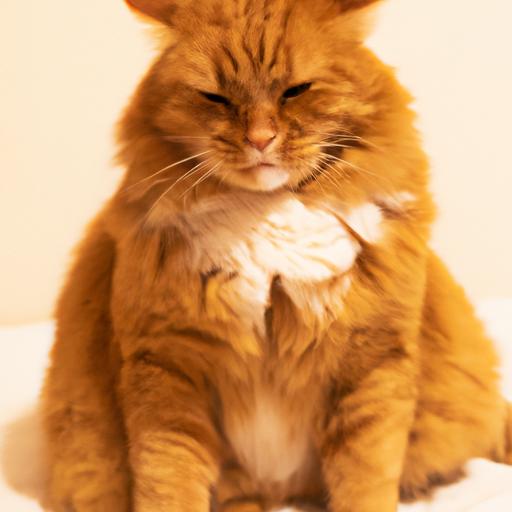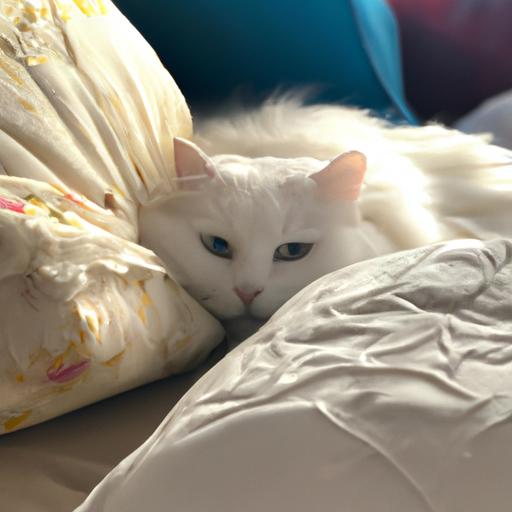Understanding and Addressing Cat Constipation: A Comprehensive Guide
Introduction
As a loving cat owner, it’s essential to be aware of any health issues your feline friend may face. One such concern is cat constipation, which can cause discomfort and affect your cat’s overall well-being. In this comprehensive guide, we will delve into the intricacies of cat constipation, its common causes, and why it is crucial to address this issue promptly.
A. Definition of Cat Constipation
Let’s start by understanding what cat constipation actually means. Constipation occurs when a cat experiences difficulty or infrequency in passing stools. Feces become dry, hard, and challenging to eliminate, leading to discomfort and potential health complications. While occasional bouts of constipation may not be alarming, persistent or recurrent episodes can indicate an underlying problem that needs attention.
B. Common Causes of Cat Constipation
Understanding the causes of cat constipation is key to preventing and managing this condition effectively. Several factors can contribute to constipation in cats, including:
- Inadequate Hydration: Insufficient water intake can result in dehydration, leading to hard stools that are difficult to pass.
- Lack of Dietary Fiber: A diet lacking in fiber can disrupt proper digestion and hinder bowel movements.
- Hairballs or Excessive Grooming: Cats are meticulous groomers, and excessive ingestion of fur can lead to the formation of hairballs, causing constipation.
- Obstruction in the Digestive Tract: Foreign objects or masses within the digestive system can obstruct the smooth flow of feces, resulting in constipation.
- Medical Conditions or Medications: Certain medical conditions like megacolon or medications that affect bowel movements can contribute to constipation in cats.
C. Importance of Addressing Constipation in Cats
Now, you may wonder why it’s crucial to address constipation in your feline companion. Well, just like humans, regular bowel movements are essential for cats’ overall health. If left untreated, constipation can lead to discomfort, pain, and even more severe conditions such as fecal impaction or obstipation. By recognizing and managing constipation promptly, you can improve your cat’s quality of life and prevent potential complications.
In the following sections, we will explore the symptoms of cat constipation, its prevention, treatment options, and when to seek veterinary assistance. So, let’s dive deeper into this vital aspect of feline health and well-being.
(Note: The remaining sections of the article will be delivered one at a time, following your request.)
Symptoms of Cat Constipation
If you suspect that your feline friend may be experiencing constipation, it’s crucial to be aware of the common symptoms associated with this condition. By recognizing these signs early on, you can provide timely assistance and alleviate your cat’s discomfort. Here are the key symptoms to watch out for:
A. Changes in Litter Box Habits
Keep a close eye on your cat’s litter box habits. If you notice any sudden changes, such as a decrease in the frequency of bowel movements or longer intervals between visits to the litter box, it could indicate constipation. Cats typically have regular and consistent bathroom habits, so any deviation should be taken seriously.
B. Straining or Difficulty While Defecating
Observe your cat during their time in the litter boIf you notice excessive straining, vocalization, or visible signs of difficulty while trying to defecate, it may be a sign of constipation. Your cat may spend an extended period in the litter box without producing any feces or only passing small amounts.
C. Dry, Hard, or Small Feces
Inspect the consistency and appearance of your cat’s feces. Constipated cats often pass dry, hard, and small stools, as the lack of moisture in the feces makes them difficult to eliminate. If you notice a significant change in the texture of the feces, it may indicate constipation.
D. Loss of Appetite or Vomiting
Constipation can affect your cat’s appetite and lead to a loss of interest in food. If your cat shows a decreased appetite or avoids eating altogether, it could be a result of constipation-related discomfort. Additionally, constipation can sometimes cause vomiting, which is another indicator to watch out for.
E. Abdominal Discomfort or Bloating
Observe your cat’s behavior for signs of abdominal discomfort or bloating. Cats with constipation may exhibit behaviors like restlessness, frequent pacing, or discomfort when touched around the abdominal area. Bloating may also be visible, with the abdomen appearing distended or firm to the touch.
By recognizing these symptoms, you can promptly address cat constipation and provide the necessary care to alleviate your feline companion’s discomfort. In the next section, we will explore the common causes of cat constipation in more detail, shedding light on factors that can contribute to this condition.
(Note: The remaining sections of the article will be delivered one at a time, following your request.)
Causes of Cat Constipation
Cat constipation can stem from various underlying causes. Understanding these factors can help you identify potential triggers and take appropriate preventive measures. Let’s explore some common causes of cat constipation:
A. Inadequate Hydration
Proper hydration is crucial for maintaining healthy bowel movements in cats. Insufficient water intake can lead to dehydration, resulting in dry and hard stools that are difficult to eliminate. Cats primarily obtain moisture through their diet, so ensuring they have access to fresh water and providing wet food can help prevent constipation.
B. Lack of Dietary Fiber
A diet lacking in fiber can disrupt the digestive process, making it harder for cats to pass stools. Fiber adds bulk to the feces and helps stimulate regular bowel movements. When a cat’s diet lacks sufficient fiber, it can contribute to constipation. Introducing high-fiber foods or incorporating fiber supplements recommended by your veterinarian can promote healthy digestion.
C. Hairballs or Excessive Grooming
Cats are meticulous groomers, and during their grooming sessions, they often ingest loose fur. This can lead to the formation of hairballs in their digestive system, causing obstructions and constipation. Regular brushing, especially during shedding seasons, can help reduce the amount of fur ingested, minimizing the risk of hairballs and related constipation issues.
D. Obstruction in the Digestive Tract
Sometimes, foreign objects or masses within the digestive tract can obstruct the smooth flow of feces. This obstruction can impede normal bowel movements, leading to constipation. It’s important to be cautious and keep potential hazards out of your cat’s reach to prevent accidental ingestion of objects that may cause blockages.
E. Medical Conditions or Medications Affecting Bowel Movements
Certain medical conditions, such as megacolon or pelvic injuries, can disrupt the natural muscle contractions in the colon, making it difficult for cats to eliminate waste. Additionally, certain medications, such as painkillers or antihistamines, can have side effects that affect bowel movements. It’s crucial to consult with a veterinarian if your cat has any underlying health conditions or is taking medications that may contribute to constipation.
By being aware of these potential causes, you can take proactive measures to prevent constipation in your feline companion. In the next section, we will delve into effective prevention strategies to help keep your cat’s bowel movements regular and comfortable.
Prevention of Cat Constipation
Preventing constipation in your beloved feline companion is crucial for maintaining their digestive health and overall well-being. By implementing the following preventive measures, you can help ensure smooth and regular bowel movements for your cat.
A. Proper Hydration Techniques
Keeping your cat adequately hydrated is essential for preventing constipation. Ensure there is always fresh water available for your cat to drink. Some cats prefer running water, so using a pet water fountain may encourage them to drink more. Additionally, consider incorporating wet food into their diet, as it contains higher moisture content than dry kibble.
B. High-Fiber Diet Recommendations
A diet rich in fiber can promote healthy digestion and prevent constipation. Consult with your veterinarian to determine the appropriate amount of fiber needed for your cat’s specific needs. High-fiber cat food or adding fiber supplements, such as canned pumpkin or psyllium husk, can be beneficial. Be sure to introduce dietary changes gradually to avoid gastrointestinal upset.
C. Regular Exercise and Physical Activity
Encouraging regular exercise and physical activity for your cat can stimulate their gastrointestinal system and help prevent constipation. Engage your feline friend in interactive play sessions using toys that encourage movement. Provide scratching posts and climbing trees to promote natural physical activity and keep your cat active.
D. Minimizing Stress and Anxiety
Stress and anxiety can disrupt your cat’s digestive system and contribute to constipation. Create a calm and comfortable environment for your feline companion by providing hiding spots, vertical spaces, and quiet areas. Reduce stressors such as loud noises or sudden changes in routine. Consider using pheromone diffusers or herbal remedies to help alleviate anxiety if necessary.
E. Monitoring and Managing Hairballs
Excessive grooming can lead to the formation of hairballs, which can contribute to constipation. Brush your cat regularly to remove loose hair and prevent excessive ingestion. Additionally, incorporating hairball control supplements or specialized cat food formulas can help manage and reduce the formation of hairballs.
By implementing these preventive measures, you can significantly reduce the chances of your cat experiencing constipation. However, if constipation persists or worsens despite these efforts, it is important to seek veterinary assistance for further evaluation and treatment options.
(Note: The remaining sections of the article will be delivered one at a time, following your request.)
Treatment Options for Cat Constipation
Cat constipation can vary in severity, and the treatment approach depends on the individual case. Here are some treatment options that can help alleviate constipation in cats:
A. Mild cases: Dietary changes and home remedies
For mild cases of constipation, simple dietary adjustments and home remedies can often provide relief. Increasing your cat’s water intake is crucial to prevent dehydration and soften the stools. You can try offering wet food or adding water to their dry food. Additionally, incorporating fiber-rich foods like canned pumpkin or psyllium husk into their diet can promote regular bowel movements.
B. Moderate cases: Laxatives or stool softeners
When constipation persists, moderate cases may require the use of laxatives or stool softeners. These over-the-counter medications can help soften the stool and facilitate its passage. However, it is crucial to consult your veterinarian before administering any medication to ensure the correct dosage and determine its suitability for your cat.
C. Severe cases: Enemas or manual disimpaction
In severe cases where constipation is stubborn and painful, more invasive measures may be necessary. Your veterinarian may recommend enemas or manual disimpaction, which involve the gentle removal of impacted feces. These procedures should only be performed by a trained professional to minimize the risk of injury or further complications.
D. Veterinary intervention and prescription medications
If home remedies and over-the-counter options prove ineffective, it’s essential to seek veterinary intervention. Your veterinarian may conduct a thorough examination and recommend prescription medications tailored to your cat’s specific needs. These medications may include stool softeners, prokinetics to improve intestinal motility, or other targeted treatments.
E. Long-term management and prevention strategies
Once your cat’s constipation is resolved, it’s crucial to focus on long-term management and prevention. This involves maintaining a balanced diet with adequate fiber content, ensuring regular hydration, and promoting exercise and physical activity. Regular veterinary check-ups are also essential to monitor your cat’s overall health and address any underlying conditions that may contribute to constipation.
By incorporating these treatment options and adopting a proactive approach, you can effectively manage and prevent constipation in your beloved feline companion.
(Note: The remaining sections of the article will be delivered one at a time, following your request.)





